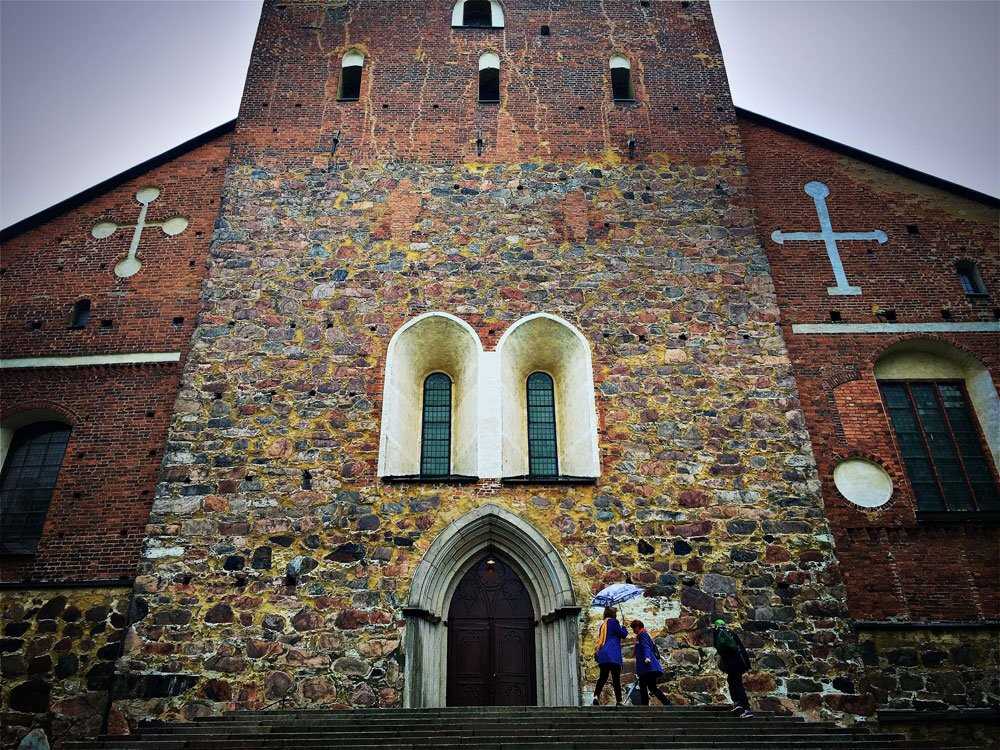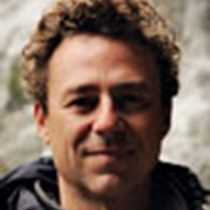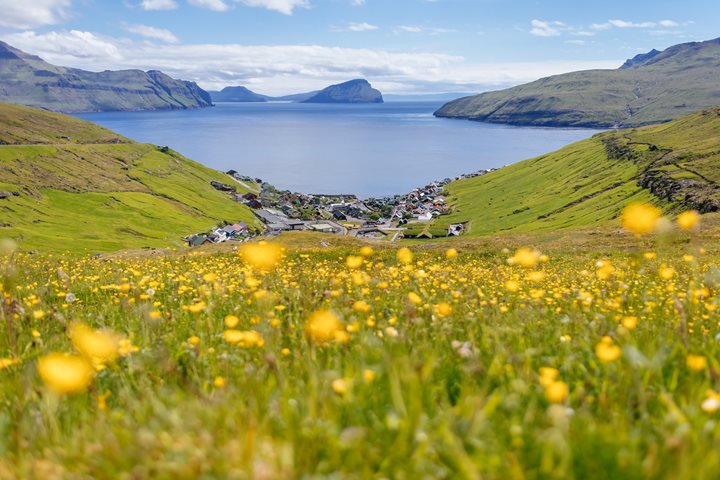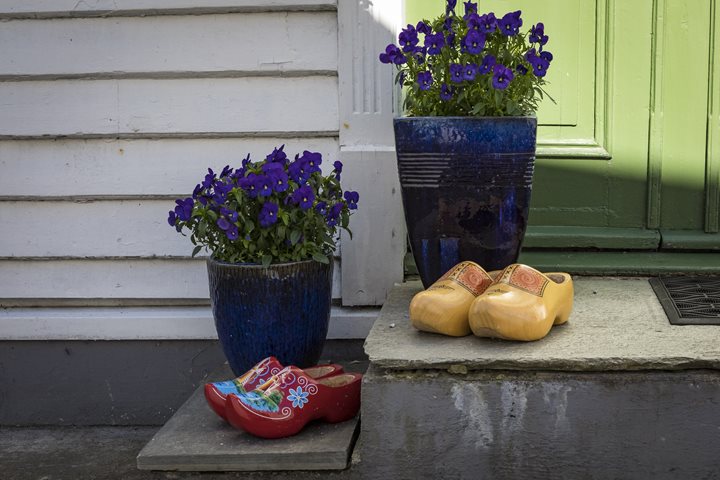Who would have guessed that the hottest real estate in the Finnish city of Turku can be found in an area called "Loony Bin Hill"? The neighborhood gets its name from the decommissioned mental hospital and prisons that are now being converted into apartments and offices. We drove up Loony Bin Hill on our bus tour of Finland's oldest city, which also took us by the location of the medieval gallows, where countless people lost their heads over offenses as minor as theft and adultery, as well as by a field where 14 people were beheaded in the Åbo Bloodbath of 1599. In a city with a history that stretches back to the 13th century, it should probably be expected that are going to have been some occasional unsavory events.
Luckily, modern day Turku is much more mild-mannered place then its medieval antecedent. Our morning excursion included a visit to the Turku Cathedral and the Turku Castle. Another group spent the morning at the Handicraft Museum, learning about some of Finland's folk traditions. The Luostarinmäki Handicrafts Museum can be found in one of the only Turku neighborhoods that survived the Great Fire of 1827. While the rest of the city was rebuilt to follow an organized grid, the Handicrafts Museum's more organic development pattern gave a sense of what this city must have been like before it had to rebuild itself after that cataclysmic event. Rustic wooden buildings, some with grass roofs, contrast tremendously with the wide boulevards and modern architecture of the rebuilt city center.
Long one of Finland's most important economic, religious, and cultural centers (the name Turku means "marketplace" in Old Finnish), the city is located on the mouth of the Aura River and was Finland's most populous city until Helsinki outgrew it in the 1840s. Finland's first university was founded here in 1640, and it continues to host 35,000 students who attend the town's two universities and various polytechnic schools.
Our first stop took us to the Turku Cathedral, whose original structure dates back to the 13th Century. The Mother Church of Finland's dominant Lutheran religion, we learned that it was possible for anyone in Finland to opt out of paying a portion of their taxes towards the Church if they so desire; all they have to do is fill out a form online.
From there, we went to Turku Castle, the largest surviving medieval building in Finland. Originally a fortress, then the administrative center of what was once a province of Sweden, and eventually used as a prison, the building has been a museum since 1881. While no original furniture remains and though it’s been extensively rebuilt over the years, it is still a fascinating and popular place to visit for a glimpse into Turku's colorful past. One highlight was a peek into the King's private toilet…even royalty must answer the call of nature.
When we returned to the ship for lunch we were greeted by a local choir made up of veteran sailors who treated us to a rousing set of sea shanties. Our afternoon at sea included a screening of fascinating film called The Singing Revolution about the role of music in Estonia's liberation struggle. Our last full day aboard the National Geographic Orion ended with the group slide show and the Captain's farewell cocktail. We raised our glasses to a successful and highly enjoyable expedition across the Baltic Sea.







